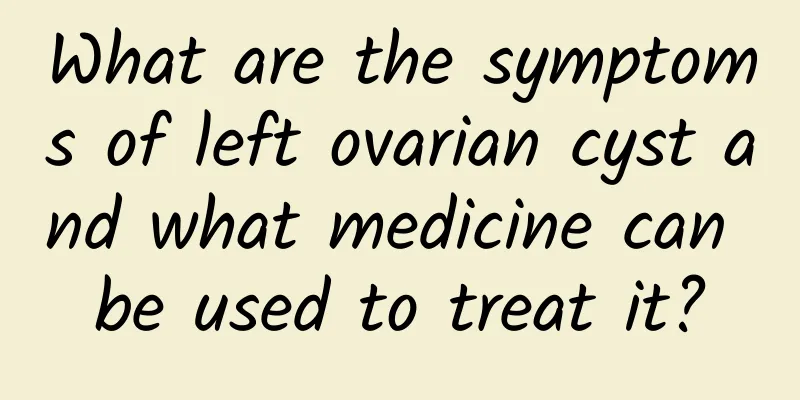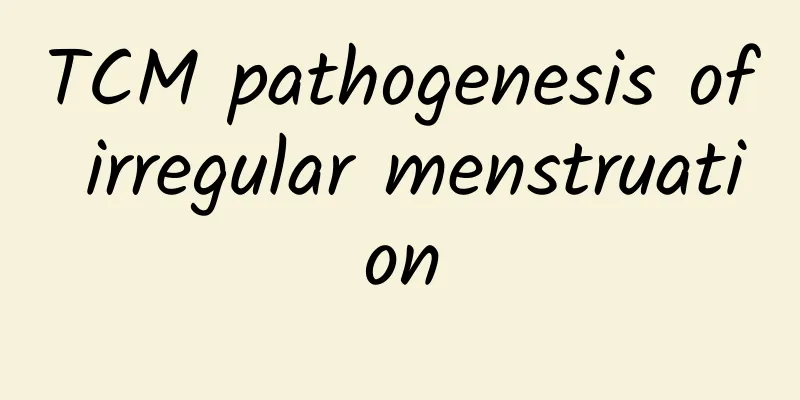What are the symptoms of left ovarian cyst and what medicine can be used to treat it?

|
Ovarian cysts, also known as ovarian tumors, are one of the common tumors of the female reproductive organs. The incidence of ovarian cancer has been rising in recent years. So, what are the symptoms of left ovarian cysts? What medicine can treat it? The food symptoms of ovarian cysts are generally as follows: 1. Discomfort in the lower abdomen It is the initial symptom before the patient feels a lower abdominal mass. Due to the weight of the tumor itself and the influence of intestinal peristalsis and changes in body position, the tumor moves in the pelvic cavity, involving its pedicle and pelvic infundibulum ligament, causing the patient to have a feeling of fullness and falling in the lower abdomen or iliac fossa. 2. Increased abdominal circumference and abdominal mass It is the most common phenomenon in the main complaint. The patient finds that his clothes or belt seem tight and small, and then notices the enlargement of the abdomen, or feels it accidentally in the morning, so he presses his abdomen and finds a tumor in the abdomen, coupled with abdominal distension and discomfort. There are several other medications that can treat ovarian cysts: Xiaojie'an Capsule can promote blood circulation and dissipate blood stasis, soften and disperse nodules. It is used for breast lumps caused by qi stagnation and blood stasis, breast lobular hyperplasia, ovarian cysts, and uterine fibroids with the above symptoms. Hongjin Xiaojie Concentrated Pills can soothe the liver and regulate qi, soften and disperse nodules, promote blood circulation and remove blood stasis, reduce swelling and relieve pain. It is commonly used for breast lobular hyperplasia, uterine fibroids, and ovarian cysts caused by qi stagnation and blood stasis. Guizhi Fuling Capsule is a compound preparation made from five traditional Chinese medicines: cinnamon twig, tuckahoe, peony bark, peach kernel, and peony root. It is suitable for endometriosis, chronic pelvic inflammatory disease, uterine fibroids, dysmenorrhea, amenorrhea, ovarian cysts, breast hyperplasia, prostate hyperplasia, urology, breast surgery, and obstetrics and gynecology. |
<<: Are the systemic symptoms of pelvic effusion obvious?
>>: Can Chinese medicine be used for treatment after painless abortion?
Recommend
Experts briefly analyze the common symptoms of uterine fibroids
Some of the symptoms of uterine fibroids are rela...
Do multiple uterine fibroids affect pregnancy?
Do multiple uterine fibroids affect pregnancy? Mu...
Detailed introduction to common methods of treating vulvar leukoplakia
Nowadays, vulvar leukoplakia is more and more com...
Can I have an abortion when I am 3 months pregnant?
Artificial abortion is usually called miscarriage...
Can drinking too much coffee cause miscarriage in pregnant women? What foods can cause miscarriage in pregnant women?
The diet of pregnant women is related to the norm...
What are the examination items for bacterial vaginosis?
Although bacterial vaginosis is a common gynecolo...
How to take care of endometrial tuberculosis
How should we care for endometrial tuberculosis i...
Experts explain the causes of irregular menstruation
As more and more people suffer from irregular men...
How long after the abortion can I go back to work?
In recent years, with the development of medical ...
What are the types and symptoms of pathological ovarian cysts?
What are the types of pathological ovarian cysts?...
Precautions before using Lipu Knife to treat cervical erosion
For patients with cervical erosion that is deep, ...
Is there any oral medicine for cervical warts?
Many people suffer from cervical warts in our dai...
If you have adnexitis, you may feel a sense of heaviness in the lower abdomen.
If you have adnexitis, you may feel a distended f...
What to do if you have adenomyosis and uterine contraction and miscarriage
Generally speaking, many people say that adenomyo...
Risks associated with hyperprolactinemia
Hyperprolactinemia is a very common disease and a...









